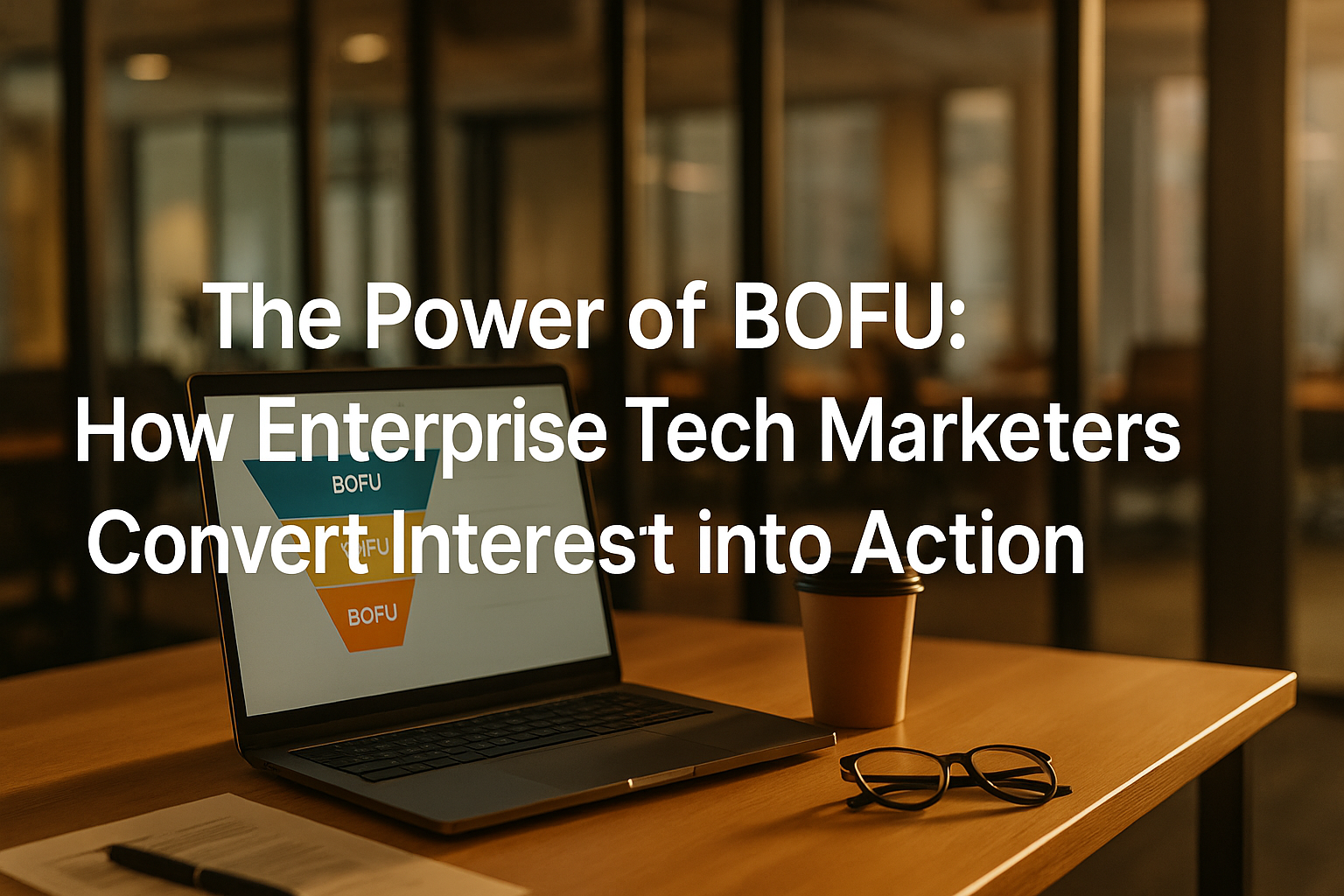Why Most Channel Campaigns Underperform—and How to Fix Them with a Performance-Based Approach
Demand Generation & Channel Marketing
Discover how Bottom-of-Funnel (BOFU) strategies help enterprise marketers turn engaged prospects into sales-ready opportunities through precision outreach and aligned execution.
-
Demand Generation Strategy

Introduction
In enterprise technology, getting a prospect to the finish line is rarely straightforward. Marketing teams may succeed in driving awareness and engagement, but when it’s time to convert interest into qualified sales opportunities, many pipelines stall.
This is where Bottom-of-Funnel (BOFU) marketing becomes mission-critical. BOFU is where your most engaged prospects are deciding whether to move forward with your solution—or with someone else’s. And in 2025, the brands that win at BOFU will be those who combine data-driven precision with personalized outreach strategies that align tightly with sales.
What BOFU Means for Demand Generation Marketers
BOFU represents the final stage of the demand generation funnel—the conversion zone where marketing efforts transition into measurable revenue outcomes. For enterprise marketers, it’s about more than just nurturing leads. It’s about helping buyers justify their decision, build internal consensus, and feel confident in selecting your solution.
Modern BOFU efforts typically include:
In enterprise environments, where buying committees can include up to a dozen stakeholders, the goal of BOFU isn’t just to close deals—it’s to build alignment and reduce friction during the final decision phase.
Common Challenges Marketers Face
Despite strong lead generation performance, many enterprise tech marketers struggle to convert marketing-qualified leads (MQLs) into sales-qualified leads (SQLs). The most common BOFU roadblocks include:
These challenges result in wasted marketing spend, longer sales cycles, and low ROI on pipeline-building efforts.



.png)



.png)
%201.png)


.png)
%201.png)


.png)








Solutions That Work
To transform BOFU performance, enterprise marketers need strategies that combine precision targeting, credible proof, and timely engagement. The most effective BOFU strategies in 2025 share a few key traits:
Prioritize Sales-Ready Conversations
At this stage, focus on quality over quantity. High-value outreach that connects prospects with senior representatives or subject matter experts converts far better than automated sequences.
Use Data to Personalize Messaging
Intent data, behavioral insights, and engagement tracking allow marketers to tailor outreach around what matters most to each buyer—reducing friction in the final decision.
Leverage Credibility-Building Assets
BOFU content like use cases, third-party reviews, and ROI calculators help validate investment value. Buyers at this stage need proof, not promotion.
Align Sales and Marketing Execution
Cross-functional visibility into the funnel ensures that every lead receives consistent messaging and timely follow-up. Shared dashboards and defined handoff processes prevent leakage.
Incorporate Human Outreach
Automation can warm a lead, but real conversations close deals. Integrating outbound calling or executive meeting programs ensures prospects move confidently toward commitment.
Actionable Steps for Marketers
To optimize BOFU campaigns and drive more conversions, marketers can take these practical steps:
Comparison of Market Solutions
Many enterprise marketing teams try to manage BOFU efforts entirely in-house, relying on internal SDRs or marketing automation systems. While this can work for smaller deals, large enterprise sales cycles require more strategic execution—outbound follow-up, personalized engagement, and constant data visibility.
That’s where specialized demand generation partners stand out. Unlike traditional lead vendors or call centers, performance-based programs ensure marketers only pay for measurable outcomes—like confirmed meetings or qualified registrants—rather than unverified leads. This model provides transparency, accountability, and faster pipeline acceleration.
Conclusion
BOFU isn’t just a stage in the funnel—it’s where enterprise growth happens. The marketers who master this stage don’t just generate leads; they create momentum that sales can convert into revenue.
By combining personalized engagement, data-driven insights, and clear sales alignment, enterprise tech teams can ensure that every marketing effort translates into real pipeline impact.
Ready to see how precision outreach can elevate your BOFU strategy?
Start a pilot with Site Ascend today and experience how performance-based programs turn intent into action.
What makes BOFU so important in enterprise demand generation?
BOFU determines whether your investment in awareness and engagement actually translates into revenue. It’s where marketing and sales alignment directly impact closed-won opportunities.
How is BOFU different from MOFU or TOFU?
TOFU (Top-of-Funnel) builds awareness, MOFU (Middle-of-Funnel) drives engagement, and BOFU focuses on conversion. It’s the point where prospects are ready for direct sales engagement and decision-making support.
What metrics should marketers track at the BOFU stage?
Key BOFU metrics include lead-to-meeting conversion rate, opportunity-to-close rate, and average deal velocity—these reveal how effectively marketing contributes to revenue outcomes.



Start your pilot campaign today and explore the full range of Site Ascend's demand generation capabilities. Experience firsthand how we can enhance your efficiency, streamline your processes, and drive growth.
RELATED